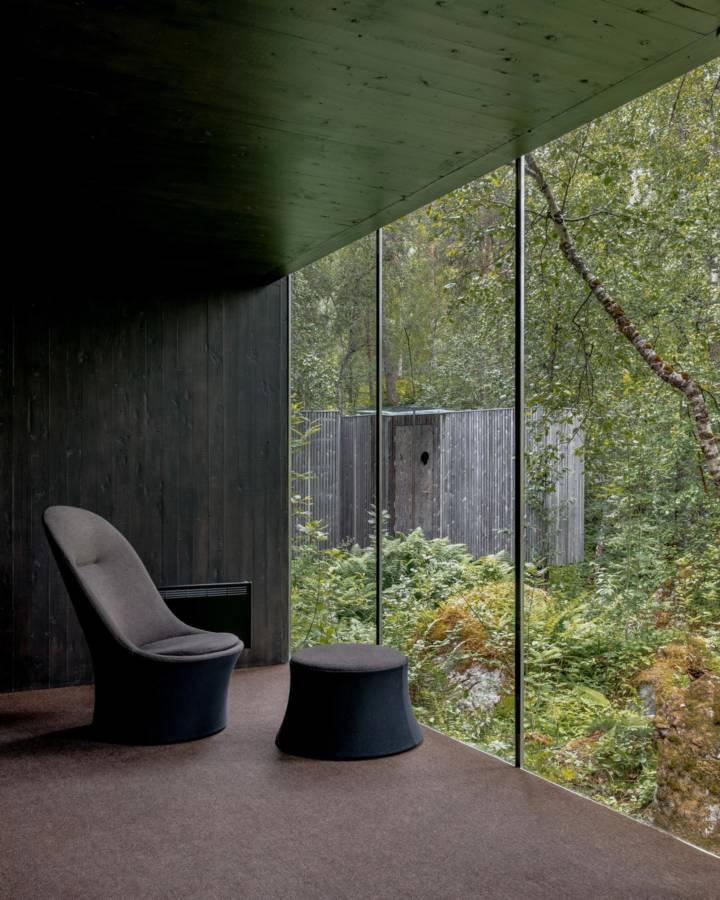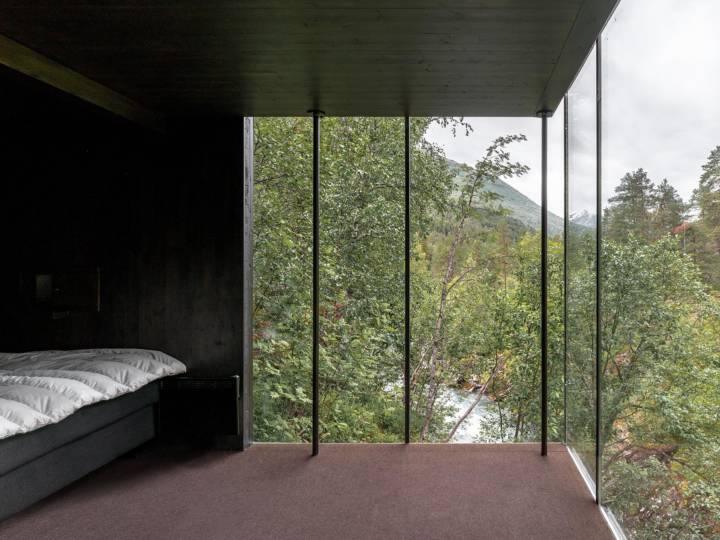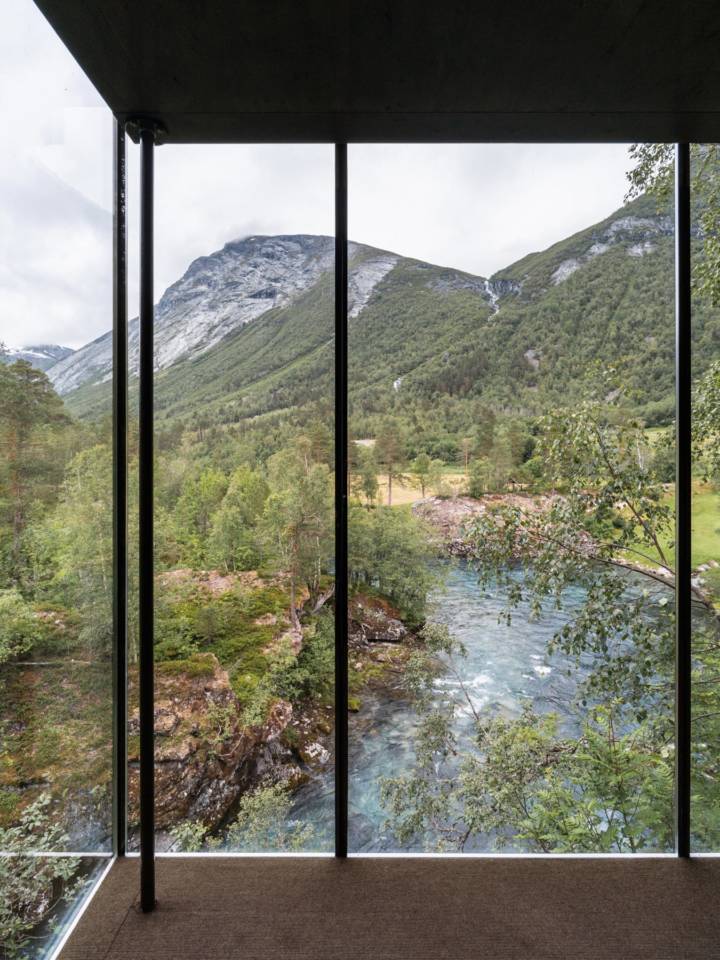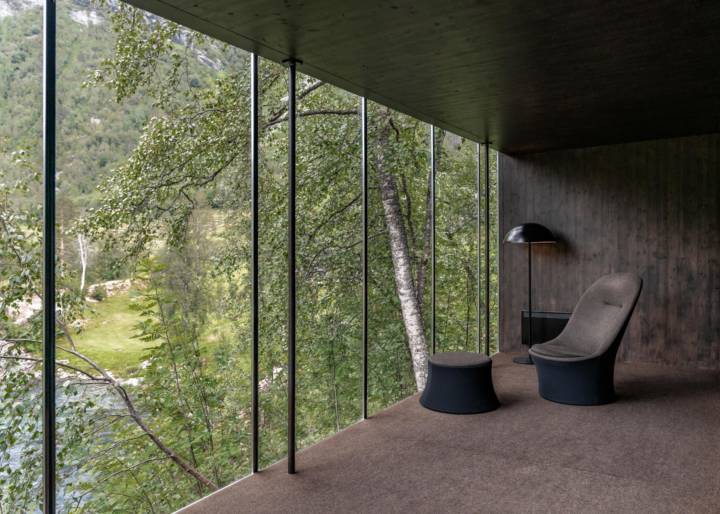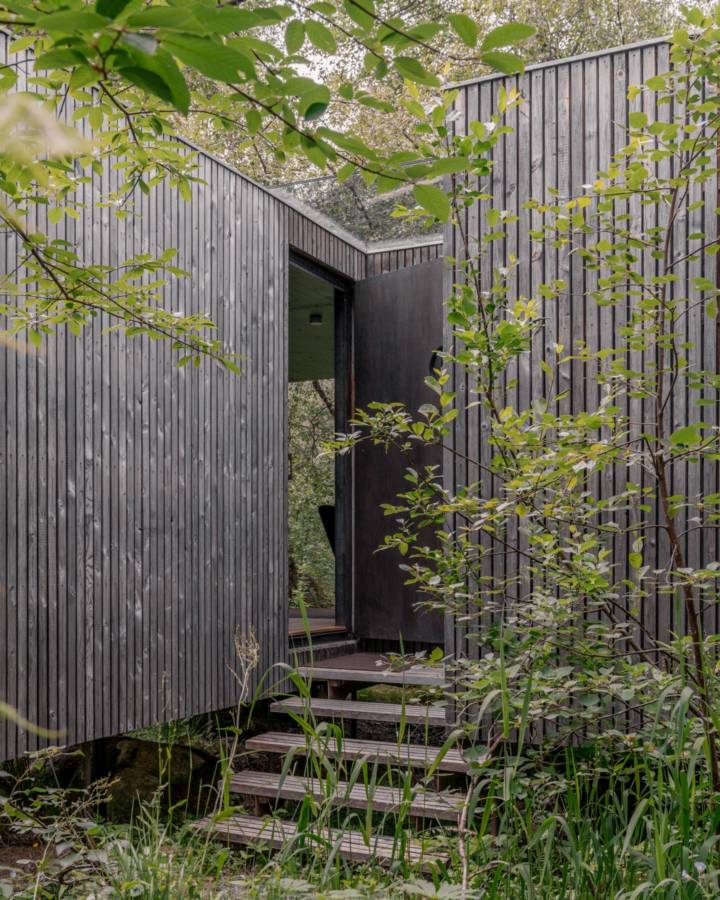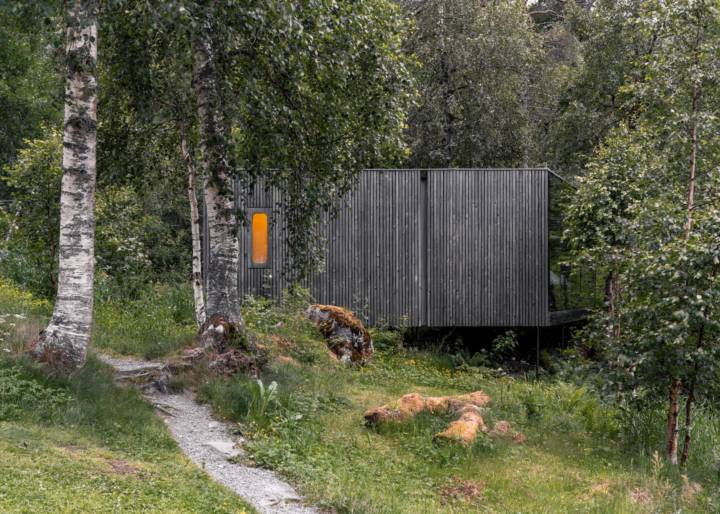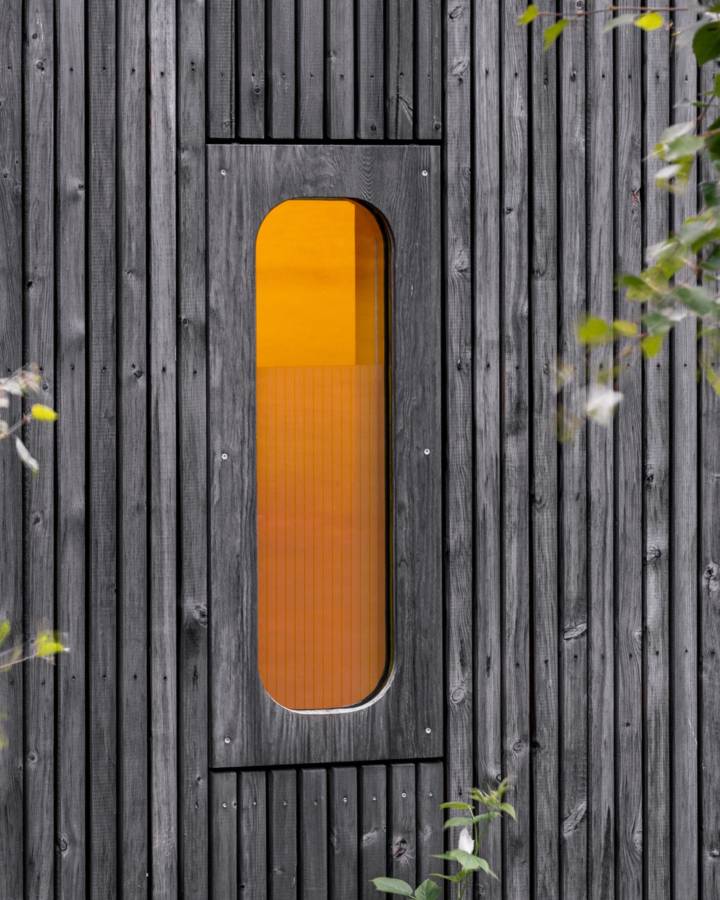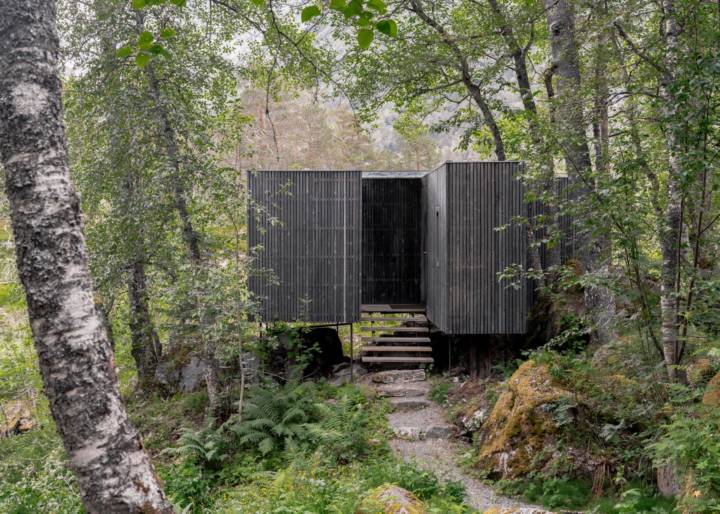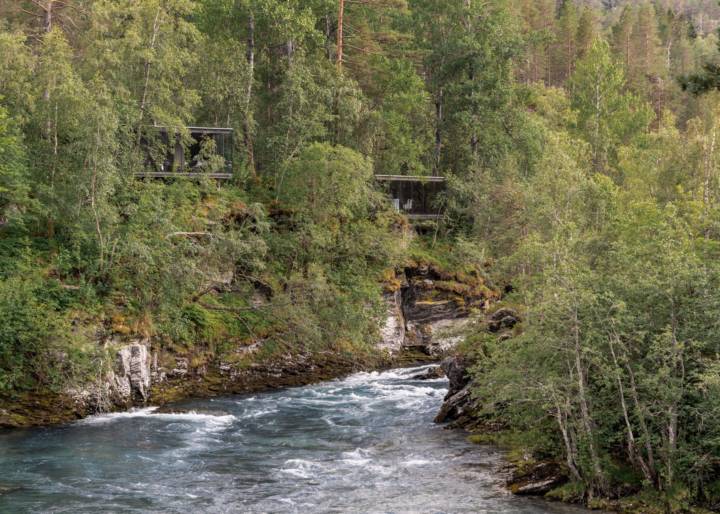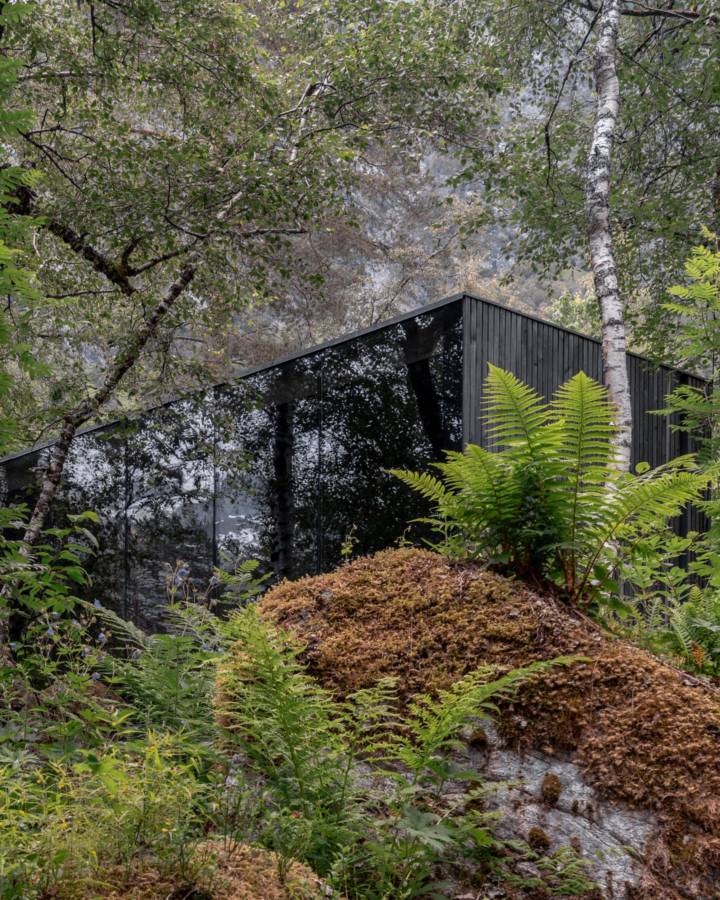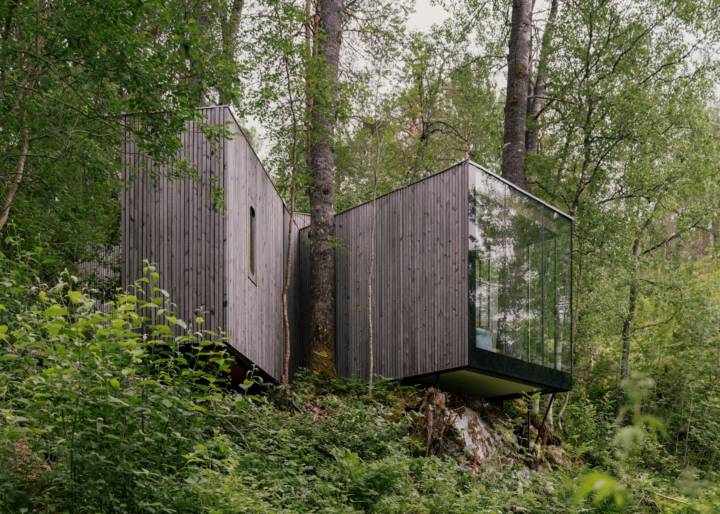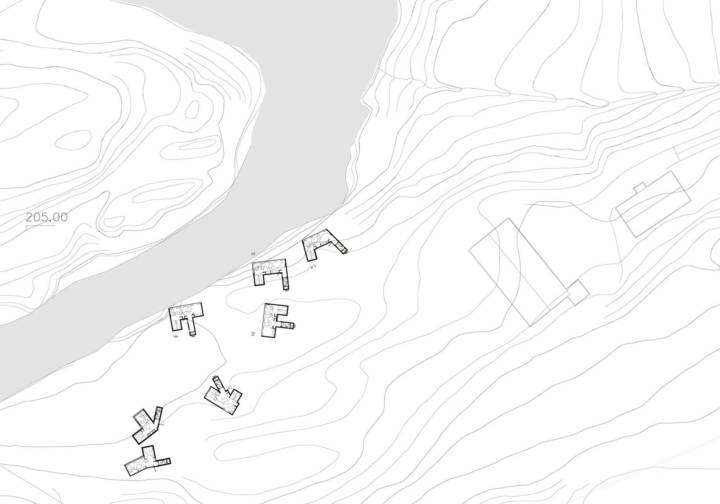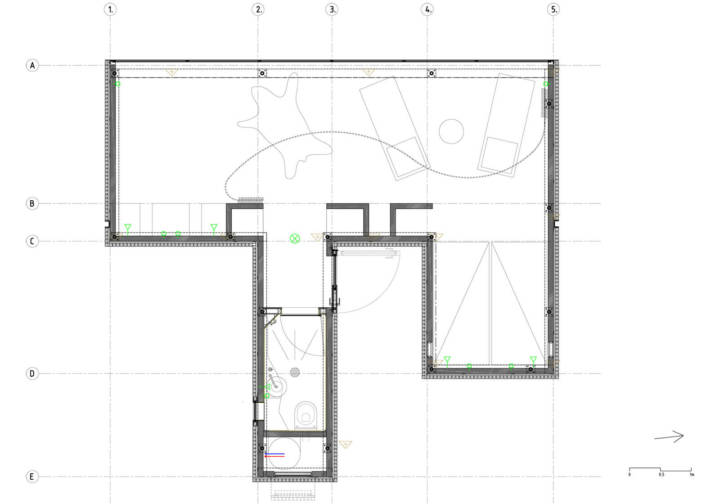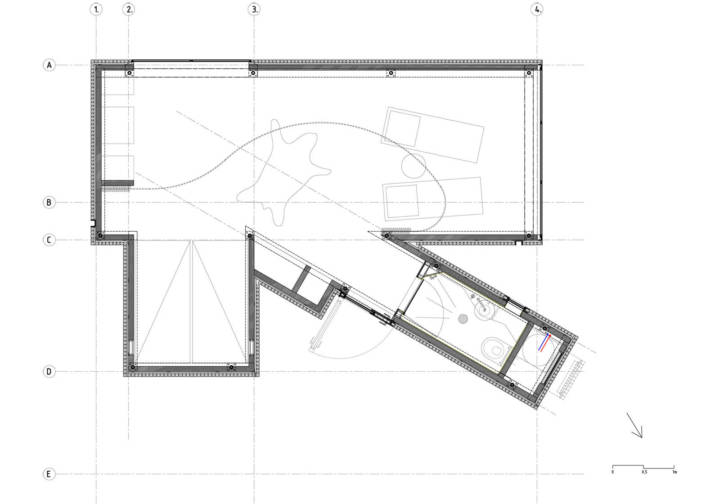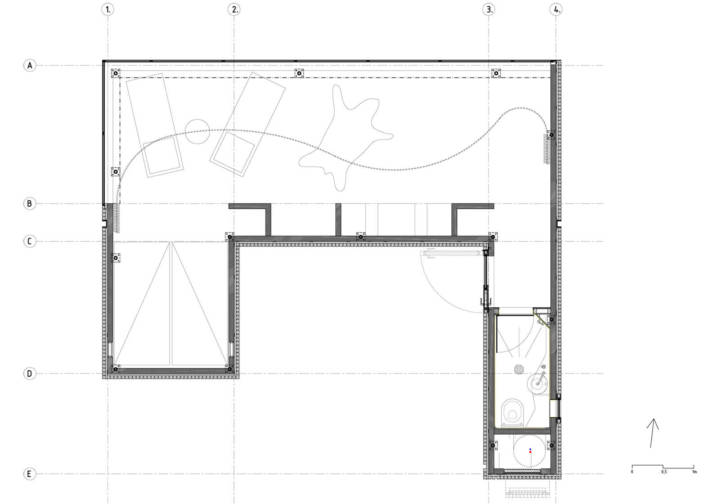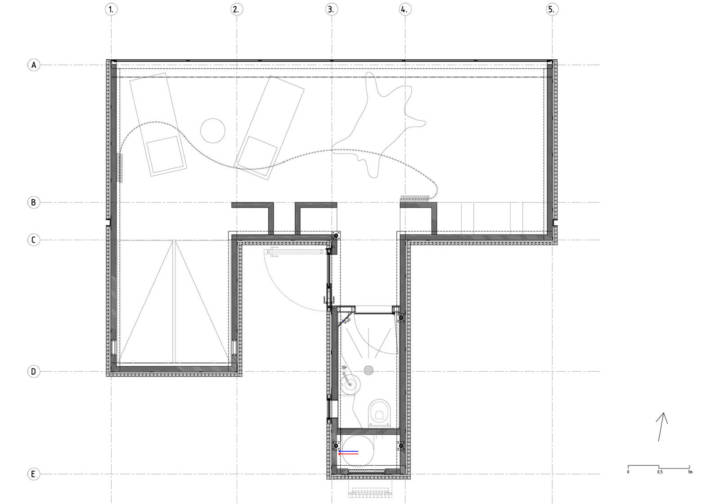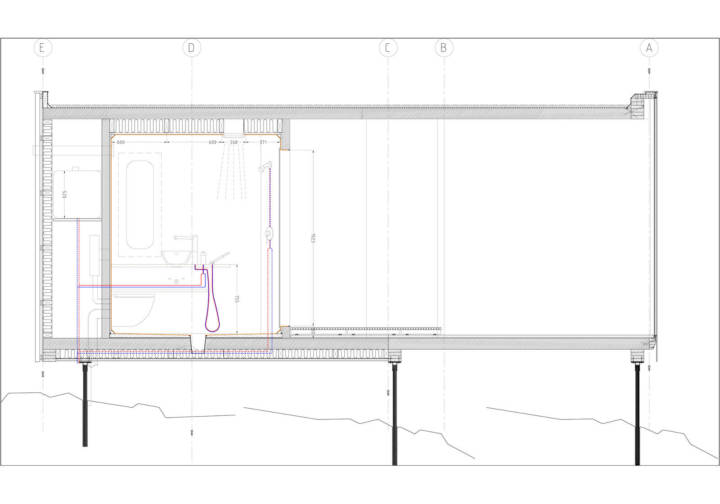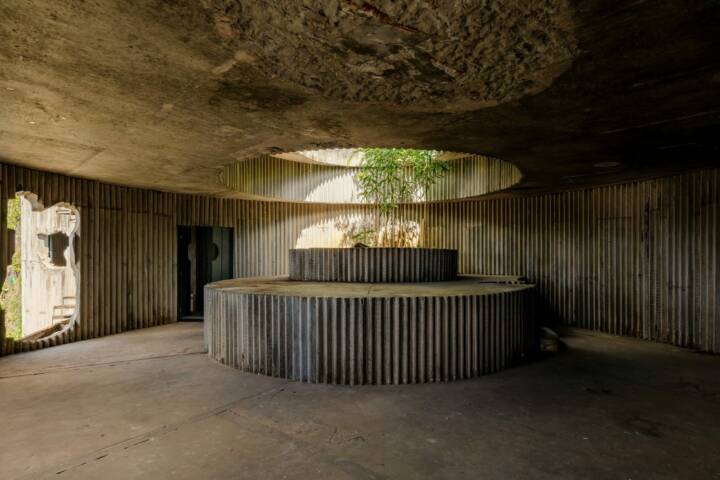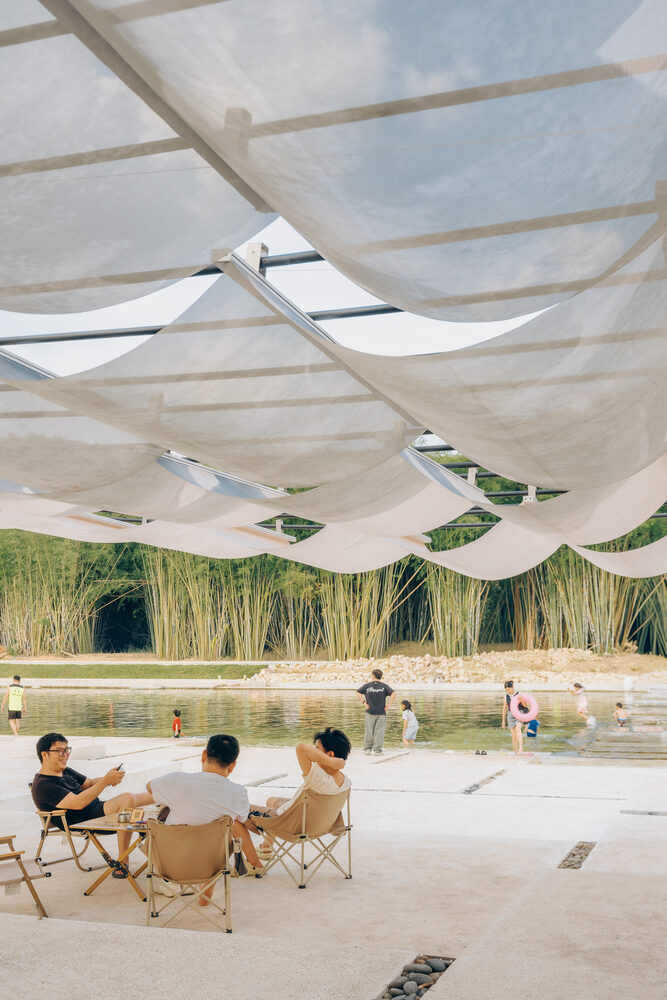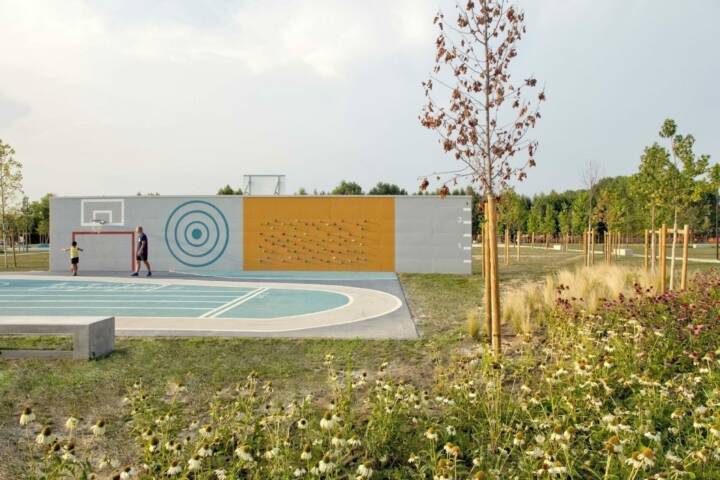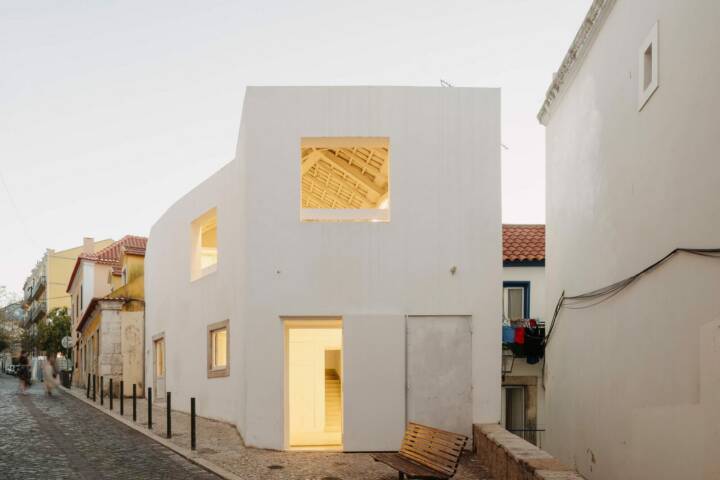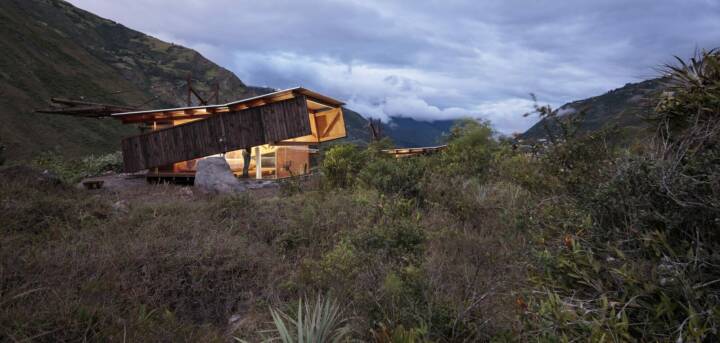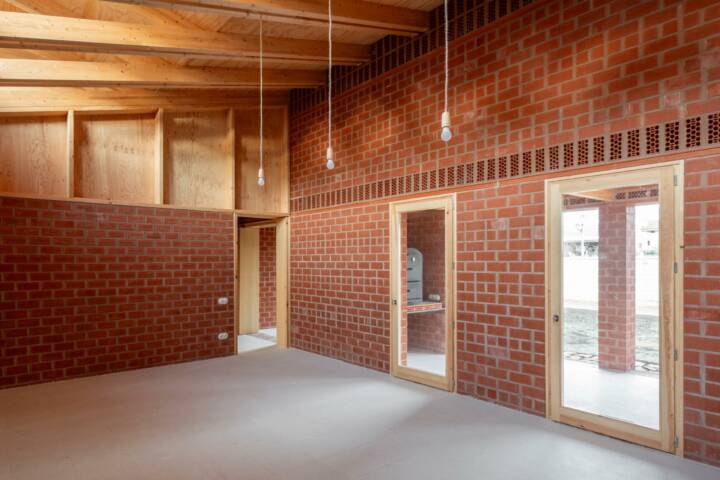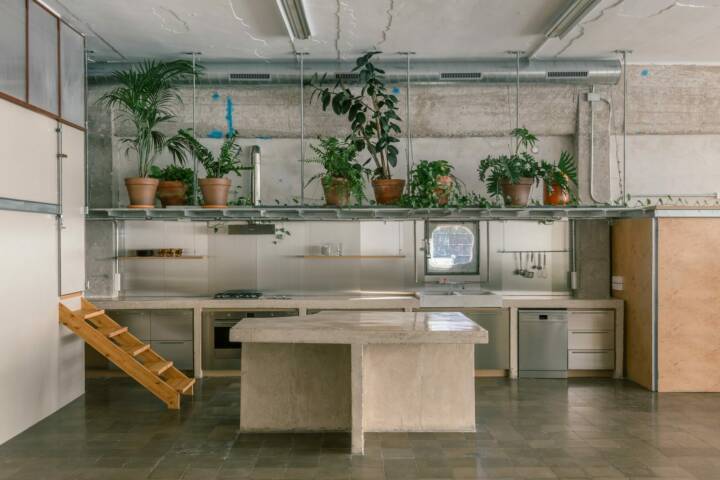Architects: Jensen & Skodvin Photography: Dan Preston Construction Period: 2007-2008 Location: Gudbrandsjuvet, Norway
Juvet Landscape Hotel is located at Valldal, near the town of Åndalsnes in north-western Norway. Passing tourists are attracted by a spectacular waterfall in a deep gorge near the road, Gudbrandsjuvet. The client, Knut Slinning, is a local resident. The idea emerged as an opportunity to exploit breathtaking scenery with minimal intervention, allowing locations which would otherwise be prohibited for reasons of conservation.
Instead of the conventional hotel, with guest rooms stacked together in one large building, the Landscape Hotel distributes the rooms throughout the terrain as small individual houses. Every house has one or two walls that are entirely built in glass, thus the experienced space in each room is maximized. Through careful orientation every room gets its own exclusive view of a beautiful and unique piece of the landscape, always changing with the season, the weather, and the time of day. No room looks out at another so the rooms are experienced as private even though curtains are not used.
The first phase consists of 7 rooms, with the possibility to add 21 more rooms according to the master plan. All the rooms have slightly differing designs, as a result of local topographical needs and vegetation, and to maximize the requirements for privacy and the best possible views. No rooms necessitate blasting of rock or changing the terrain, as the rooms are added to the existing topography.
Read MoreCloseThe rooms are built in a massive wood construction with no exterior insulation, and are intended for summer use only. Each building rests on a set of 40mm massive steel rods drilled into the rock, existing topography and vegetation left almost untouched. The glass is set against slim frames of wood, locked with standard steel profiles, using stepped edges to extend the exterior layer of the main glass surfaces all the way to the corners.
The interiors are treated with transparent oil with black pigments, so that reflections from the inner surface of the glass wall are minimized. Shelves, benches and a small table are all built by the same massive wooden elements to maintain a certain degree of monotony that goes well with the complex nature views and to keep the visual presence of the interior at a minimum.
Today’s concern for sustainability in architecture focuses almost excludingly on reduced energy consumption in production and operation. We think that conservation of topography is another aspect of sustainability which deserves attention. Standard building procedure requires the general destruction of the site to accommodate foundations and infrastructure before building can commence. Conserving the site is a way to respect the fact that nature precedes and succeeds man. Also, dutiful observation of existing topography produces a reading where the geometry of the intervention highlights the irregularities of the natural site, thus explaining both itself and its context with more power. A sustainable connection is established between structure and site.
Text provided by the architect.
